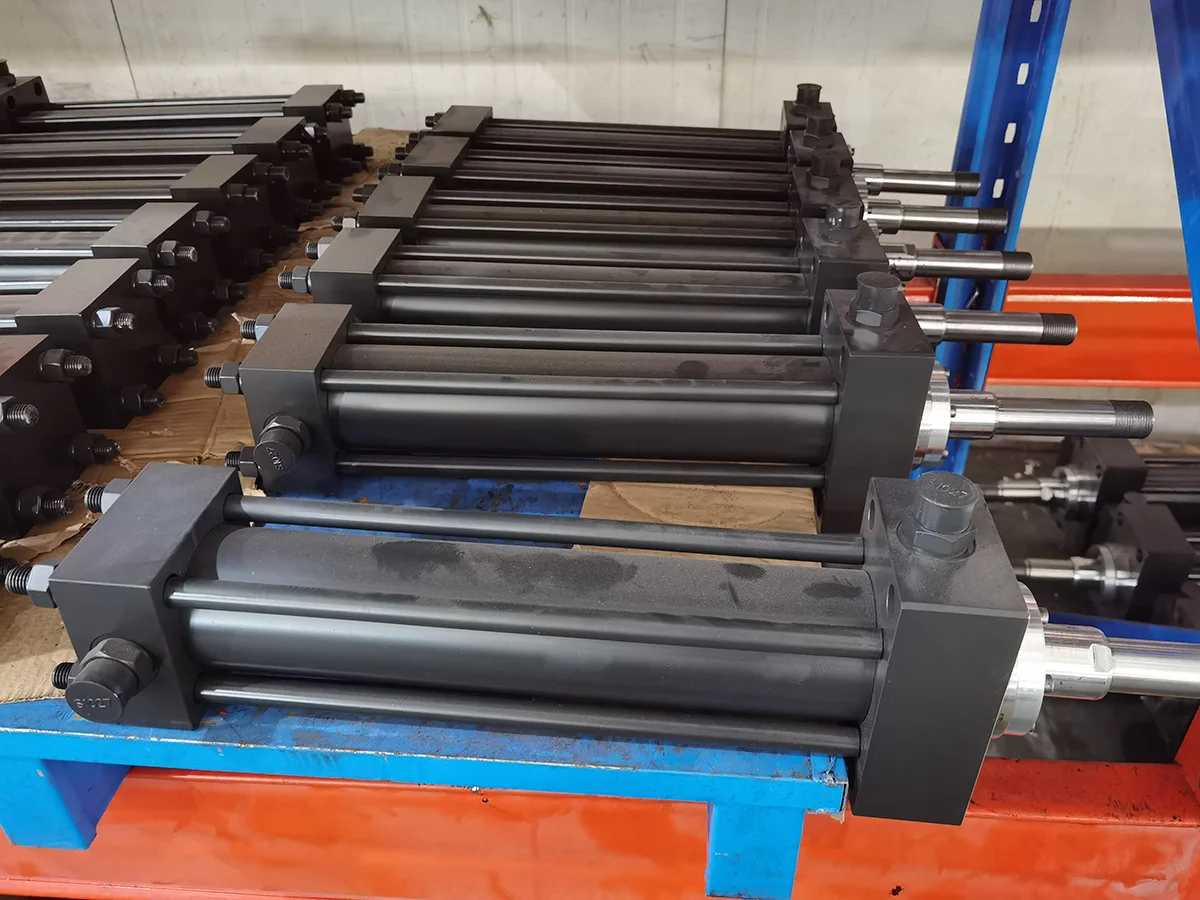How to choose the right tie rod hydraulic cylinder
Tie rod hydraulic cylinder is a common hydraulic actuator and is widely used in various mechanical equipment. It uses hydraulic force to push the piston to achieve mechanical movement. Choosing the right tie rod hydraulic cylinder is critical to the performance and efficiency of your mechanical equipment. This article will explain how to select the appropriate tie rod hydraulic cylinder to meet different application needs.
1. Understand application requirements
Before selecting a tie rod hydraulic cylinder, you first need to understand the application requirements. This includes but is not limited to the following aspects:
Required thrust: Determine the maximum thrust required based on the workload and movement requirements of the mechanical equipment. This will help determine the size and capabilities of the tie rod hydraulic cylinder.
Movement speed: Determine the required movement speed range of mechanical equipment. Different hydraulic cylinders have different speed characteristics, and choosing the appropriate speed range can improve the efficiency of mechanical equipment.
Working environment: Consider the working environment of mechanical equipment, including temperature, humidity, corrosive substances, and other factors. Choosing a hydraulic cylinder adapted to the working environment can improve its service life and reliability.

2. Determine the type of hydraulic cylinder
Select the appropriate hydraulic cylinder type based on application requirements and mechanical equipment characteristics. Common hydraulic cylinder types include single-acting hydraulic cylinders, double-acting hydraulic cylinders, and multi-stage hydraulic cylinders.
Single-acting hydraulic cylinders: Single-acting hydraulic cylinders can only apply force in one direction and are typically used in simple applications that require pushing or pulling. They have a simple structure and low cost, making them suitable for some smaller applications.
Double-acting hydraulic cylinder: A double-acting hydraulic cylinder can exert force in two directions, either pushing or pulling. They are suitable for applications requiring bidirectional movement and have a wider range of applications.
Multi-stage hydraulic cylinders: Multi-stage hydraulic cylinders can use multiple pistons to increase thrust. They are suitable for applications requiring greater thrust, such as heavy machinery equipment.
3. Choose the right size and capabilities
Select the appropriate tie rod hydraulic cylinder size and capacity based on the application needs and the workload of the machine. The following factors need to be considered:
Thrust Requirements: Determine the maximum thrust required based on application requirements. The thrust capacity of the tie rod hydraulic cylinder should be greater than or equal to the required thrust to ensure the normal operation of the mechanical equipment.
Piston diameter: Calculate the required piston diameter based on the required thrust and the working pressure of the hydraulic cylinder. A larger piston diameter provides more thrust but also increases the size and weight of the hydraulic cylinder.
Stroke length: Determine the stroke length required by the mechanical equipment, that is, the maximum moving distance of the piston. The stroke length of the tie rod hydraulic cylinder should be greater than or equal to the required stroke length.
4. Consider speed characteristics
According to the movement speed requirements of the mechanical equipment, select the appropriate speed characteristics of the tie rod hydraulic cylinder. The following factors need to be considered:
Movement speed range: Select the movement speed range of the hydraulic cylinder according to the movement speed requirements of the mechanical equipment. Different hydraulic cylinders have different speed characteristics, including fast stroke speeds and slow stroke speeds.
Control method: Select the appropriate hydraulic cylinder speed control method according to the control method of the mechanical equipment. Common speed control methods include manual control, electric control, and proportional control.
5. Consider the work environment
When selecting a tie rod hydraulic cylinder, you need to consider the working environment of the mechanical equipment. The following factors need to be considered:
Temperature range: Choose a hydraulic cylinder that adapts to the temperature range of the working environment. High or low-temperature environments may have an impact on the performance and life of hydraulic cylinders.
Corrosive substances: If the mechanical equipment works in an environment with corrosive substances, choose a corrosion-resistant hydraulic cylinder to ensure its reliability and service life.
Packaging material: Choose a hydraulic cylinder packaging material that adapts to the working environment. Different packaging materials have different wear resistance, corrosion resistance and high temperature resistance.
Choosing the right tie rod hydraulic cylinder is critical to the performance and efficiency of your mechanical equipment. Before making a selection, it is necessary to understand the application requirements, determine the hydraulic cylinder type, select the appropriate size and capacity, consider the speed characteristics and the working environment. By comprehensively considering these factors, the most suitable tie rod hydraulic cylinder for mechanical equipment can be selected to improve the working efficiency and reliability of mechanical equipment.
How to choose a quality tie rod cylinder manufacturer: key strategies and considerations
Protect your investment: effective anti-corrosion measures for tie rod cylinders
Hydraulic tie rod cylinder sealing technology: the key to optimized performance and extended life
Detailed explanation of precautions and operating procedures for safe use of tie rod cylinders
Factors and analysis affecting the price of tie rod cylinders
Material selection for tie rod cylinders: a balance between performance and application
tie rod cylinder and welded cylinder, which one to choose?
Key factors in selecting tie rod cylinder size specifications
Analysis of the working environment of tie rod cylinder
The history and future development trends of tie rod cylinder
Sealing structure and application of tie rod cylinder
Matching and application of tie rod cylinder in hydraulic system
Application of tie rod cylinder in automobile manufacturing field
Tie rod cylinder manufacturing and quality control
The market and application prospects of tie rod cylinders
Why are tie rod hydraulic cylinders so popular?
What are the applications of tie rod hydraulic cylinders?
mia
peterchen@jinhai.cn
Post Comment